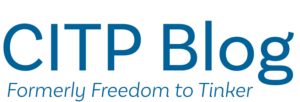Year: 2023
-
Securing the Web PKI
CITP is releasing a report today based on a two day in-person workshop on the security of the Web Public Key Infrastructure (Web PKI) we held last year. The workshop convened a multistakeholder gathering of experts from across the internet infrastructure, including browser developers, certificate authorities, content delivery networks, cloud providers, civil society, and academia.…
-
Building the Society We Want: A CITP Conference
Twenty years ago, social media companies started telling us: “Hey, use this free digital mediaproduct!” We individually used it, or didn’t. And then we all used it, because we had to. Just like the car.The existence of the technology restricts human freedom and agency. The die has been cast:social media has reshaped everything and to…
-
Rising Juniors and Seniors – Do you want to make an impact with public interest technology this summer?
Apply here now to be part of the Siegel Public Interest Technology Summer Fellowship! Artificial intelligence, privacy and security, social media platforms and the internet are influencing all sectors of society — from the justice system and banking, to online shopping and the way we work. Indeed, the demand for expertise is great. Each summer,…
-
CITP is hiring for multiple positions, including professor, fellow and Emerging Scholar. Join us!
Assistant, Associate or Full Professor The School of Engineering and Applied Science (SEAS) and CITP are accepting applications for an assistant, associate or full professor whose work aligns with CITP’s priorities areas: platforms and digital Infrastructure; data science, AI and society, and privacy and security. Please apply here. Fellows Program We are accepting applications for…
-
Switzerland’s e-voting system has predictable implementation blunder
Last year, I published a 5-part series about Switzerland’s e-voting system. Like any internet voting system, it has inherent security vulnerabilities: if there are malicious insiders, they can corrupt the vote count; and if thousands of voters’ computers are hacked by malware, the malware can change votes as they are transmitted. Switzerland “solves” the…
-
How to Promote Responsible Open Foundation Models
Experts from industry, academia and government share lessons learned and outline a path forward at a Princeton-Stanford workshop Author Kevin Klyman is a researcher at the Stanford Center for Research on Foundation Models and M.A. candidate at Stanford University. Foundation models are the centerpiece of the modern AI ecosystem, leading to rapid innovation, deployment, and…
-
A reasonably priced Ballot On Demand system from Hart Intercivic
To run vote centers that must supply many different ballot styles, for hand-markable paper ballots to be counted by optical scanners, it’s convenient and effective to use ballot-on-demand (BOD) printers. When the voter signs in at the vote center, the BOD laser printer produces a hand-markable optical scan ballot, with the appropriate choice of contests…
-
We have job openings!
The Princeton Center for Information Technology Policy is hiring for the following positions: Assistant, Associate or Full Professor CITP is now accepting applications for a new assistant, associate or full professor whose research work aligns with our three priorities areas: Visit the Princeton University’s Open Faculty & Academic Professional Positions for application details. Fellows Program (Postdoctoral…
-
Searcy County Arkansas switches to hand-marked paper ballots
Almost all Arkansas counties have been using ballot-marking devices (BMDs) in their elections. Searcy County has just chosen to switch to hand-marked (fill-in-the-oval) paper ballots, which will be counted by machine (for an unofficial, immediate count) and then counted by hand (for an official, certified count). Hand counting all the ballots might be impractical in…
-
ExpressVote XL “fix” doesn’t fix anything
Five years ago I described a serious security flaw in the design of all-in-one voting machines made by two competing manufacturers, ES&S and Dominion. These all-in-one machines work like this: the voter indicates choices on a touchscreen; then a printer prints the votes onto a paper ballot; the voter has a chance to review the…

